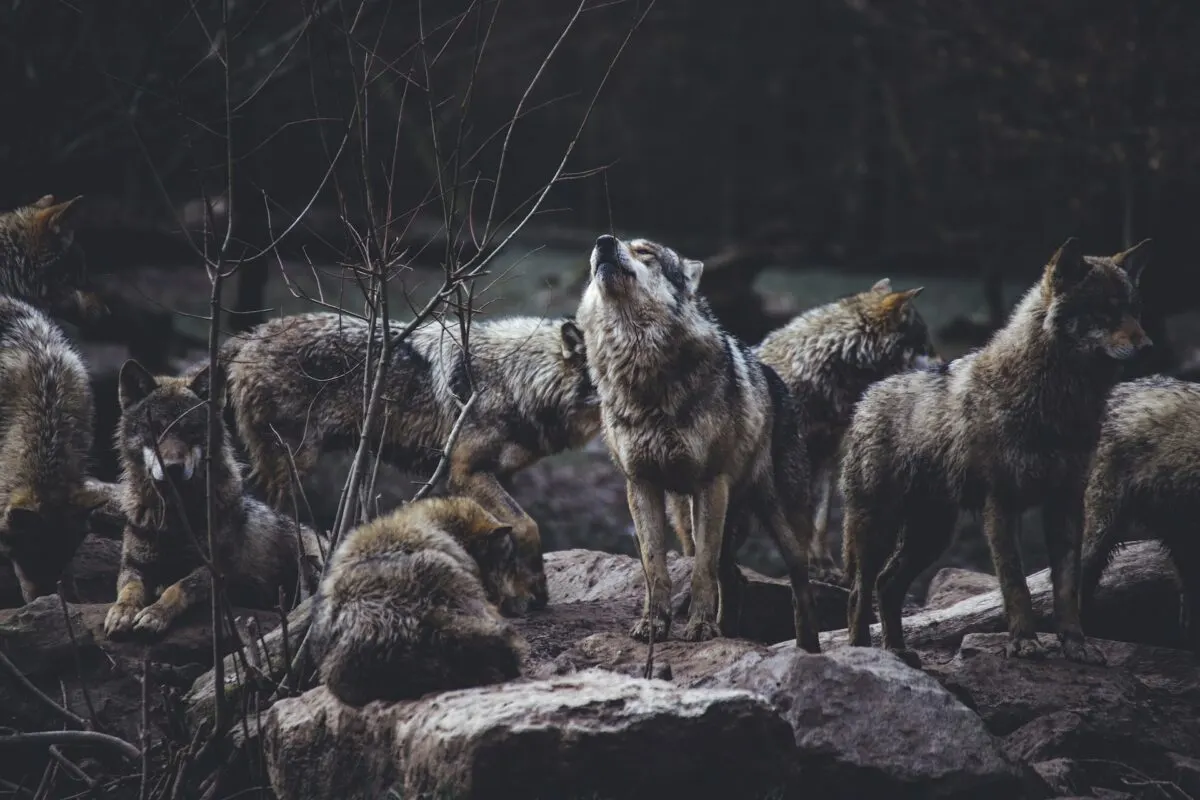In this post we’re going to assess two different species of the animal kingdom, both mammals, namely a pack of wolves vs. the grizzly bear.
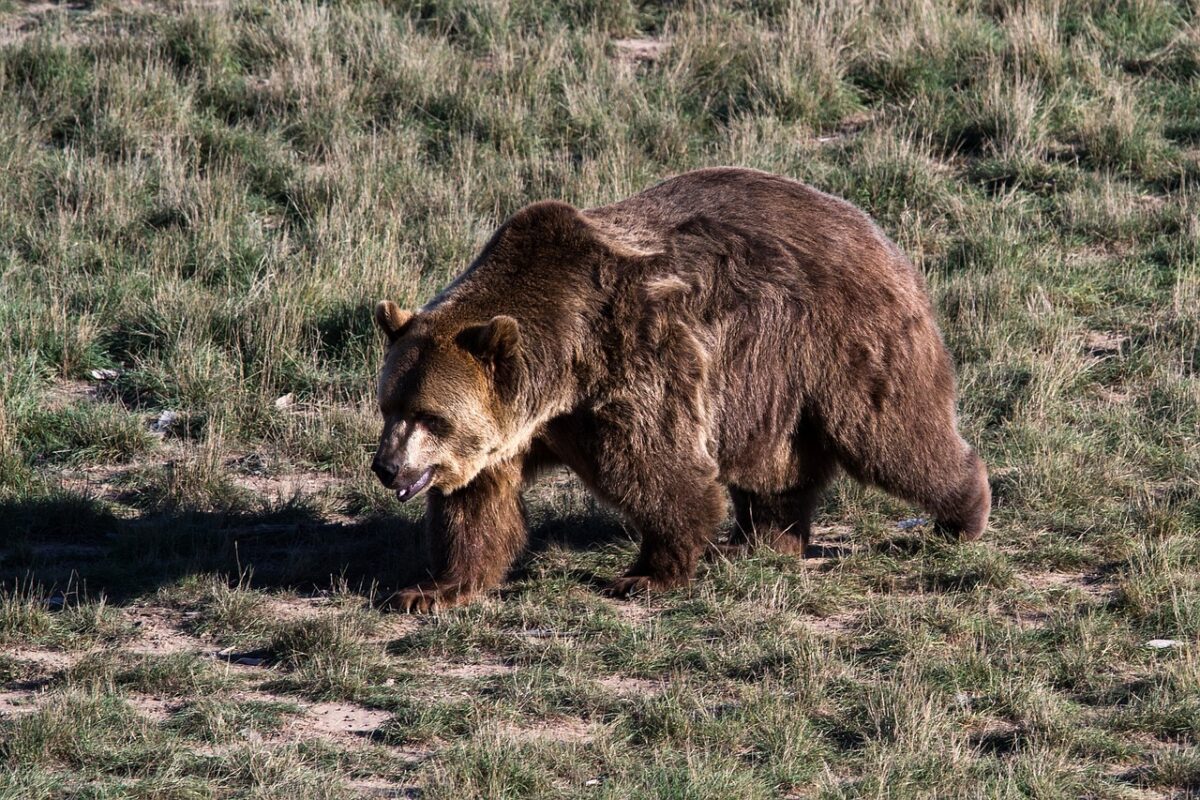
Wolves and grizzly bears are two of the most iconic animals in North America, representing both beauty and power. Wolves have long been celebrated as symbols of strength and freedom, while grizzly bears represent a challenging hunter to be reckoned with. But how do these two majestic creatures actually compare?
On one side of the ring stands the grizzly bear, a towering beast with massive claws and an imposing presence. On the other side, a pack of wolves, sleek and nimble, with razor-sharp teeth and a relentless hunting instinct.
If you want to know more about these two rivals, keep reading with us!
Start at the beginning or jump to any section of your liking below:
Habitat
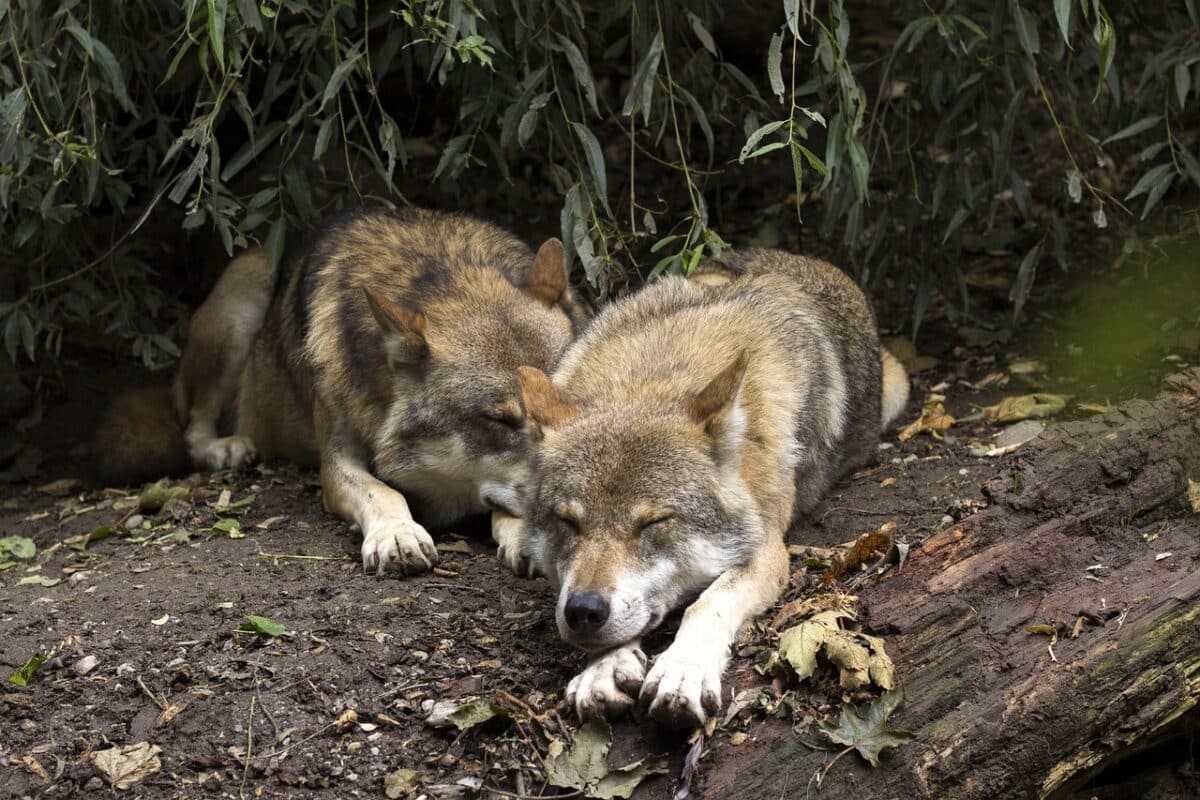
The habitats of wolves and grizzly bears differ significantly despite both species being found in North America. Wolves typically inhabit forests, grasslands, tundra, and deserts. They prefer areas with plentiful vegetation where they can hunt for food more efficiently.
Meanwhile, grizzly bears live mainly in mountainous regions and along the coasts of northern Canada. They typically inhabit dense vegetation, such as meadows and forests, where they can find plenty of food sources.
In terms of climate, wolves prefer colder climates that do not get too hot or too cold for them to survive. This is why they are more commonly found in the northern parts of North America. On the other hand, grizzly bears are adapted to a broader range of temperatures and can be found in many regions across North America, depending on the season.
Moreover, wolves travel in packs and rely heavily on teamwork when hunting for food. As a result, their packs tend to stay together for long periods to survive harsh conditions. Grizzly bears, however, are solitary creatures and tend to roam alone. They also do not hunt in packs and are more prone to wander about in search of food.
Physical Appearance
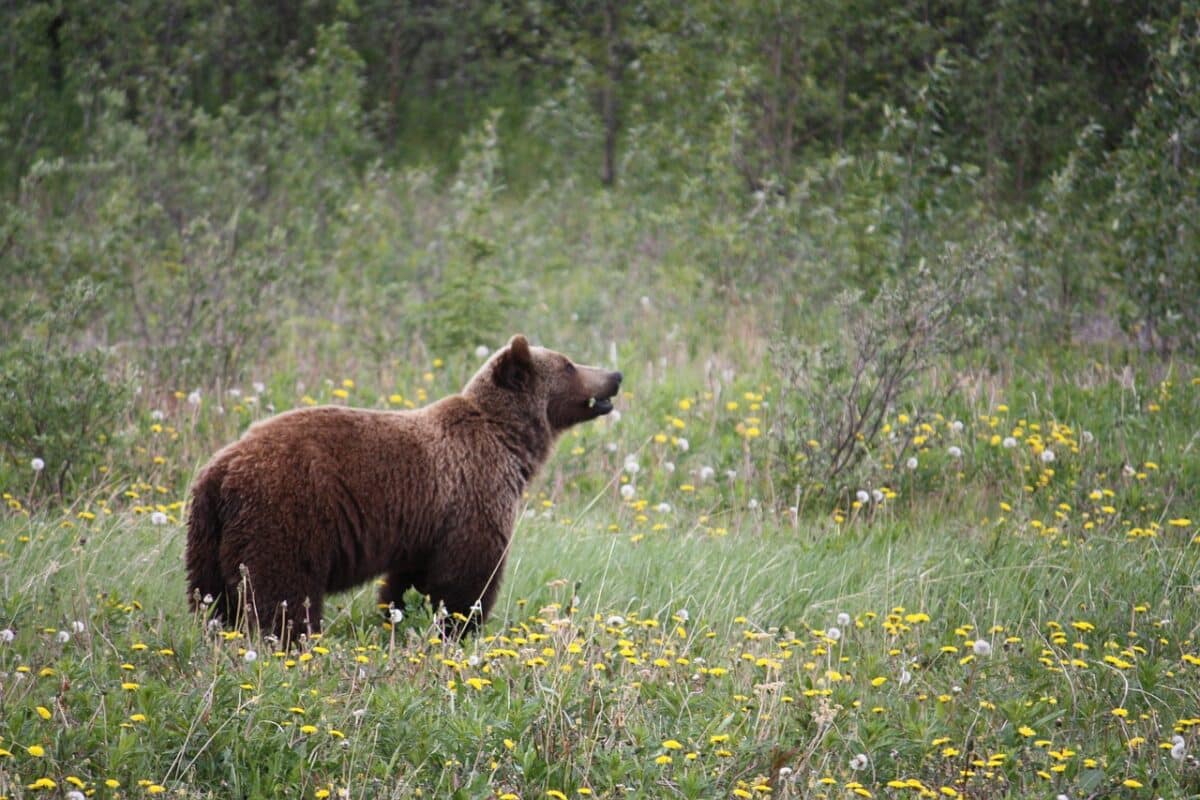
There are clearly numerous differences when it comes to comparing the physical appearances of a pack of wolves vs. the grizzly bear.
Wolves are typically lean and long-limbed, with powerful jaws, sharp teeth, and fur ranging from brown to gray or black. They have huge paws, which help them travel great distances for food.
On the other hand, the grizzly bear has a bulky body covered with thick fur, ranging in color from blond to almost black. Its strong jaws can crush anything, from nuts to animal bones. Its long claws can be up to four inches long. Moreover, its large size makes it dangerous when threatened – it is not an animal one wants to challenge!
Also, it is vital to mention that both animals have distinctive facial features. For instance, wolves have pointed ears that stick straight up on their heads, while grizzly bears have rounded ears set low on their heads. Additionally, wolves also have sharp eyes and long snouts, while grizzlies have short snouts and small eyes.
Diet
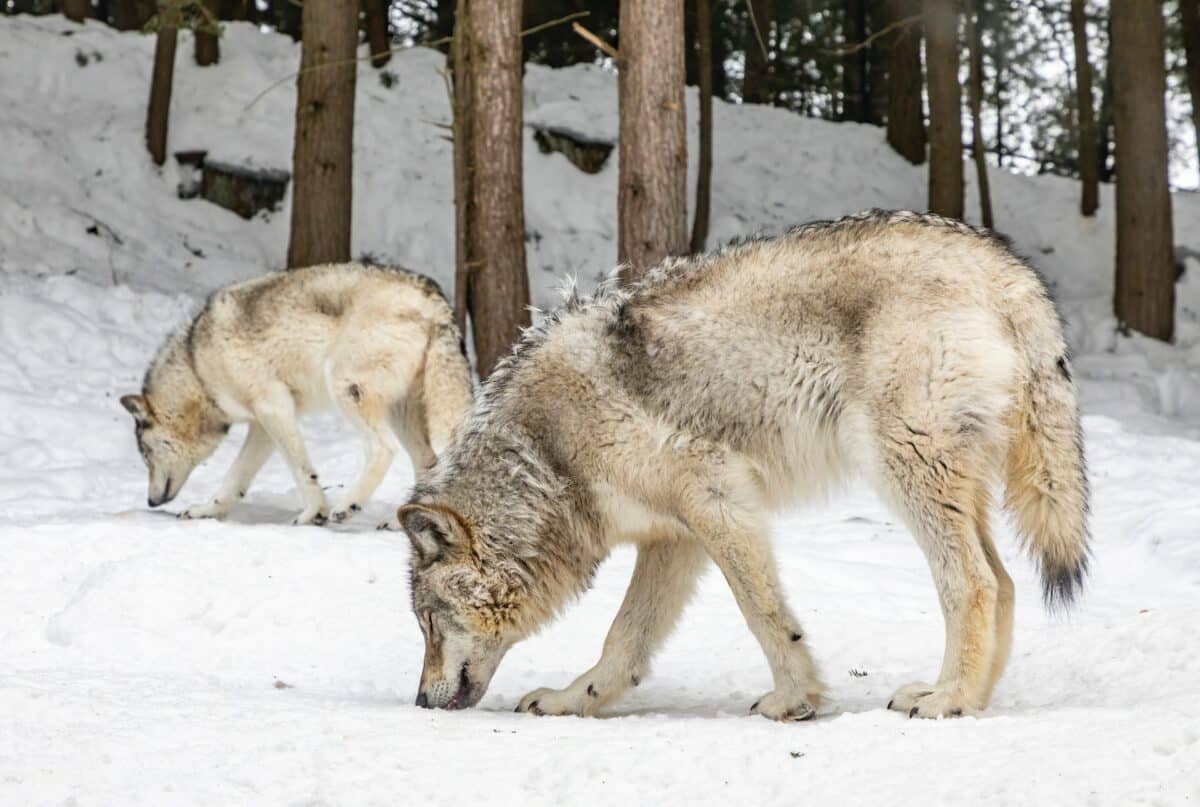
Wolves feed on small game such as rabbits and deer but also scavenge for carrion when necessary.
Grizzly bears are omnivorous, meaning they feed on both meat and vegetation. They mostly hunt for small things such as salmon and berries and larger animals like moose. Although their diet consists of meat and plants, grizzly bears will opt for easier meals whenever possible.
Sexual & Social Life
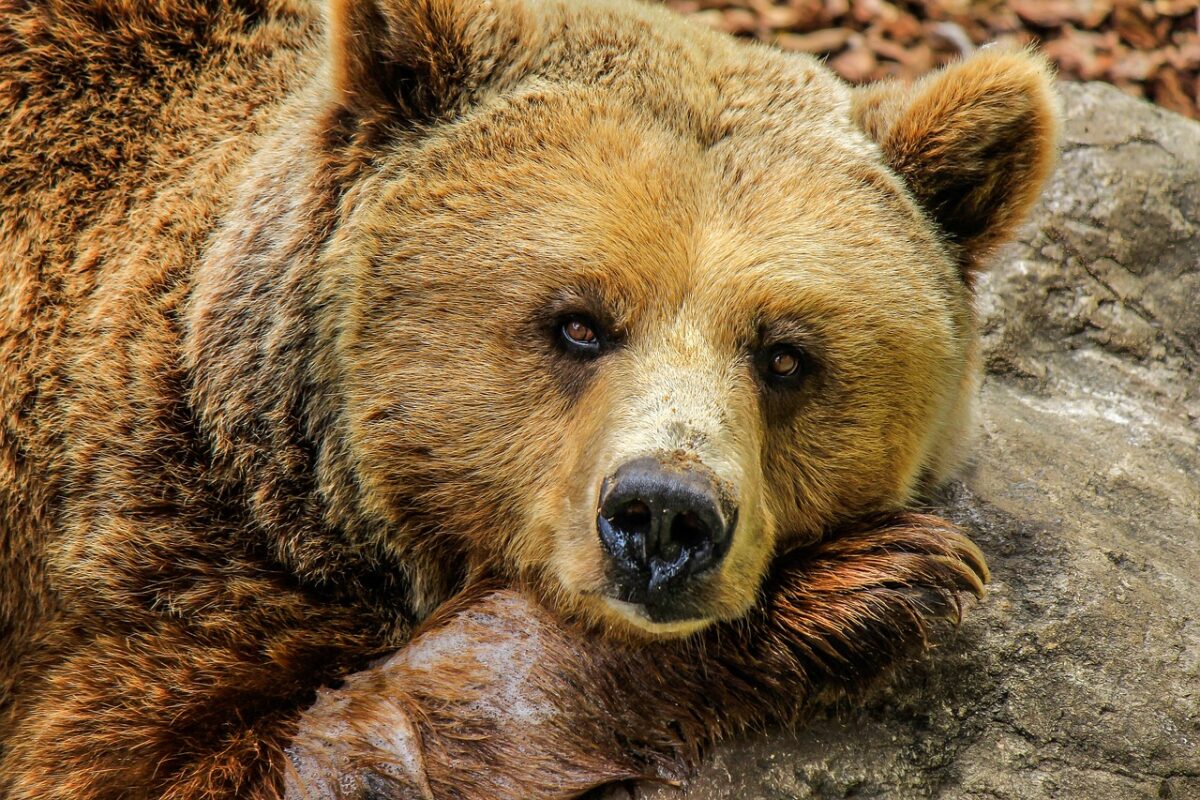
The sexual maturity of wolves and grizzly bears varies significantly. Wolves reach sexual maturity at two to three years, while grizzly bears take four to five years to become sexually mature.
In addition, female wolves typically experience their first estrus cycle at around 18 months old and can thereafter reproduce annually. Female grizzlies enter their first estrus cycle once they are four or five years old and may only reproduce every other year.
Wolves are highly social mammals that form packs where each member plays a specific role for the group to survive as a unit. Male wolves typically disperse from the pack when they reach sexual maturity to find mates, while female wolves remain with the pack throughout their lifetime.
Grizzly bears, conversely, are solitary creatures that form only temporary bonds during the breeding season. Male and female grizzlies typically stay in their own home ranges until they reach sexual maturity at four to five years of age.
Overall, wolves reach sexual maturity faster than grizzly bears and can reproduce more frequently due to their social habits. However, grizzly bears’ more reclusive nature means they live longer and may be more successful at reproducing offspring with superior genes.
Endangerment Status
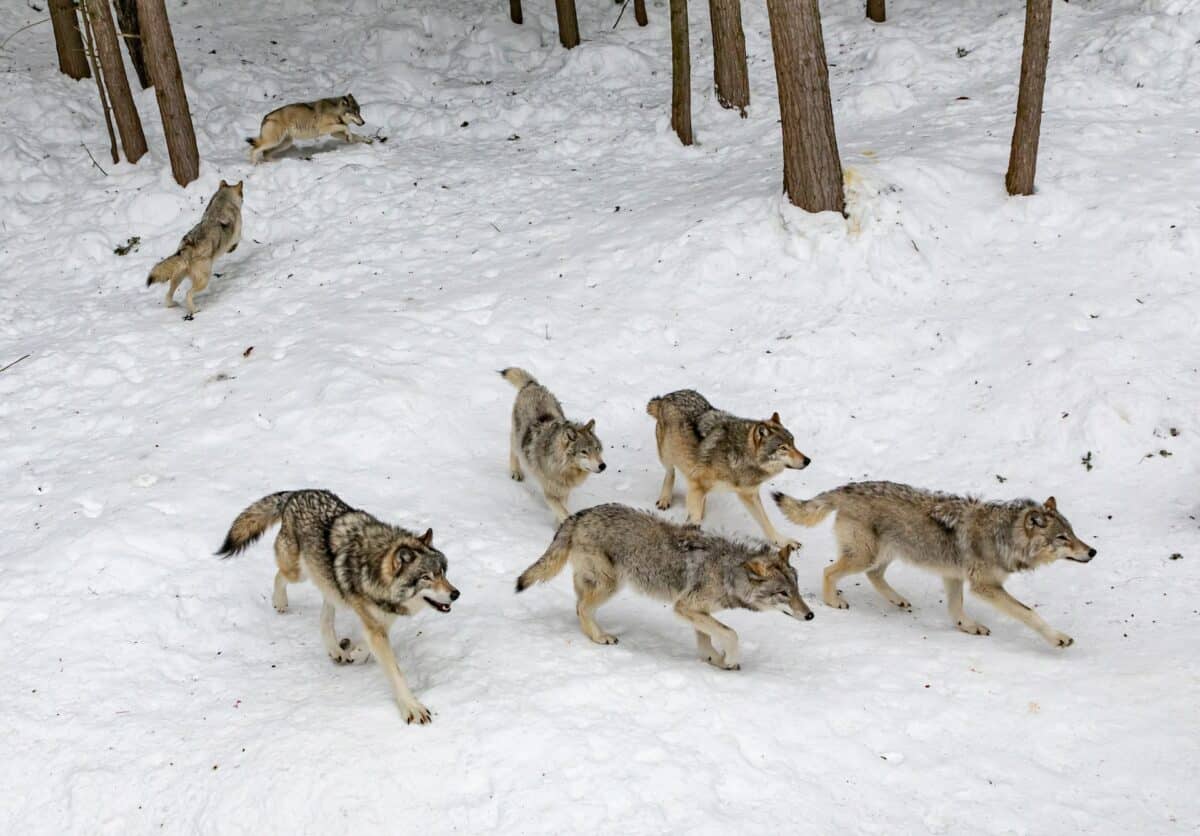
The endangerment status of the Pack of Wolves Vs. the Grizzly Bear are also quite different.
Wolves are listed as a species of least concern, meaning their population is stable and not facing immediate extinction. Nonetheless, we still need to keep a careful eye on them to ensure that their population remains stable.
On the other hand, the grizzly bear has been placed on the endangered species list due to significant threats from habitat destruction and poaching.
Conservation efforts have been implemented to help increase the population of both animals, and while there have been signs of progress for wolves, grizzly bears remain highly vulnerable to extinction in some areas.
To protect these species for future generations, governments must continue to support conservation initiatives that combat illegal hunting, habitat destruction, and climate change. By working together, we can ensure that wildlife remains an integral part of our environment for years to come.
Who Would Win a Battle Between a Pack of Wolves vs. Grizzly Bear?
The battle between a pack of wolves and a grizzly bear may seem daunting. Although it’s not common, these two animals have been known to fight in some cases.
Wolves are incredibly intelligent creatures, capable of working together and plotting strategies to take down their prey. For this reason, they are formidable opponents when faced with a single bear. On the other hand, grizzly bears are much, much bigger than a wolf, and they are powerful predators themselves and will not back down from a fight.
Regarding physical strength, grizzly bears have an advantage due to their size and weight. They can weigh up to 8 times more than the average wolf and reach heights over 9 feet tall when standing on their hind legs! Additionally, the claws of a grizzly bear are much larger and sharper than a wolf’s, allowing them to inflict more damage in close-range combat.
When it comes to Wolf’s mentality, they have an advantage as they are more likely to stay together and form a plan of attack against their adversary. In contrast, grizzly bears tend to be loners and may either back down from the fight or flee if outnumbered by a pack of wolves.
Ultimately, this battle’s outcome heavily depends on the situation at hand; no one can predict who will win in such a confrontation. Regardless of how this battle plays out, these animals are incredible predators that deserve our respect for their strength and resilience in the wild.
Key Points
| The habitats of wolves and grizzly bears differ significantly despite both species being found in North America. |
| Wolves are typically lean and long-limbed, on the other hand, the grizzly bear has a bulky body covered with thick fur. |
| Governments must continue to support conservation initiatives that combat their population decrease, although the Grizzly requires a bit more attention than the wolf. |
| Wolves are incredibly intelligent creatures. Meanwhile, grizzly bears are powerful predators regarding physical strength. |
| Kodiak bears and Siberian tigers are two species identified as endangered by the International Union for Conservation of Nature. |
The Final Take
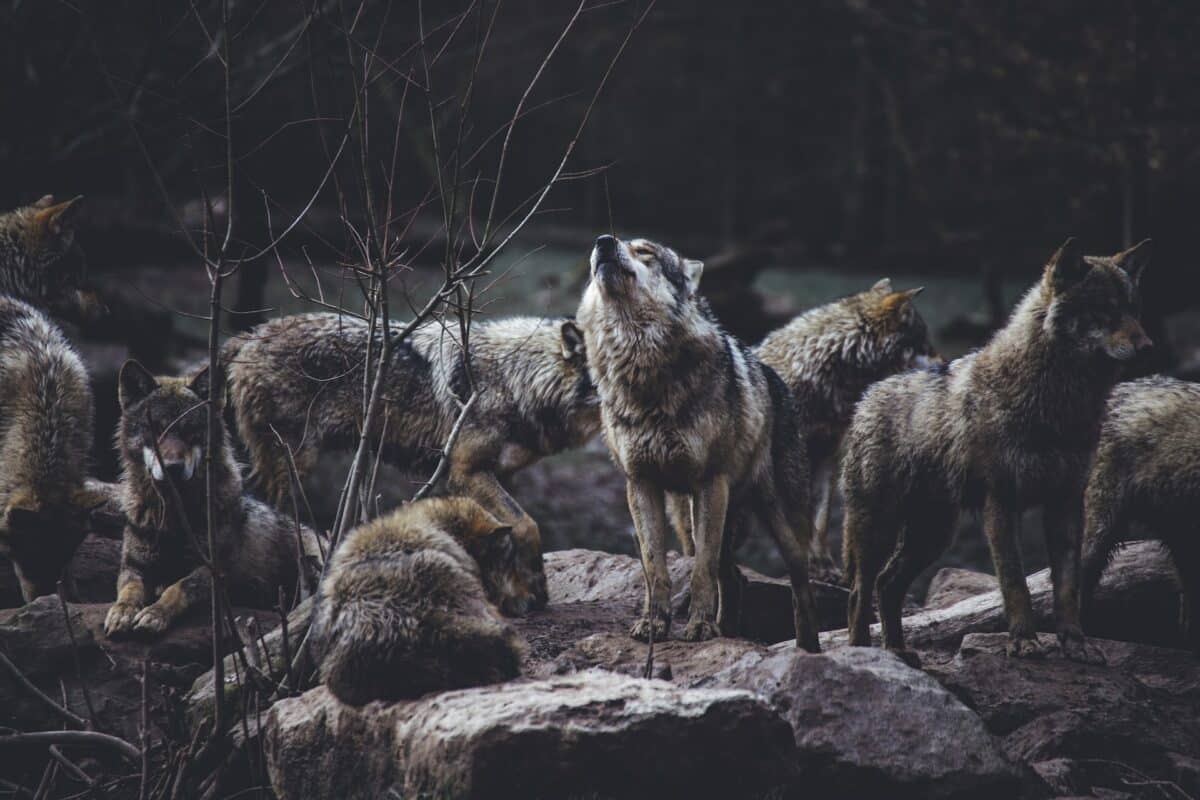
In conclusion, wolves and grizzly bears are two powerful predators adapting to their environment differently. The pack of wolves has an advantage in hunting due to its larger numbers, while the grizzly bear is more than capable of taking on a single wolf thanks to its strength and size.
However, when faced with either animal, your best bet for survival is quickly escaping the situation!
Thank you for reading this article! If you are curious to read a similar comparison, read our post on the White Tiger vs. Black Bear.
- Octopus Stuck to Diver’s Back and Won’t Come Off - April 25, 2024
- Magpie Bird Is Reunited with Her Dog Best Friend - April 24, 2024
- Dog Saves Another Dog From Drowning in Fish Pond - April 23, 2024

